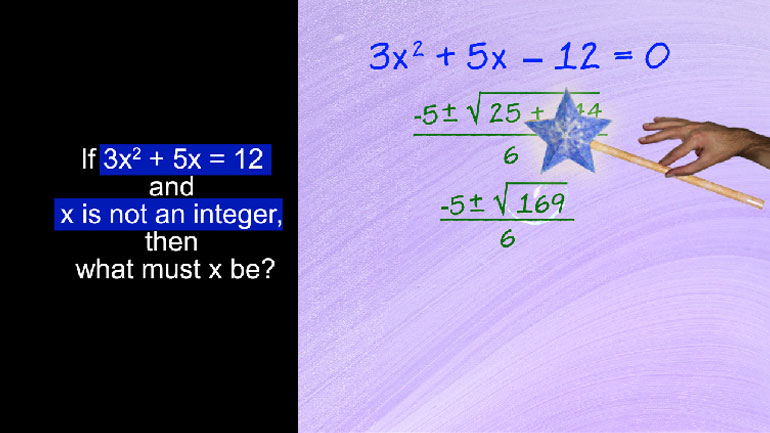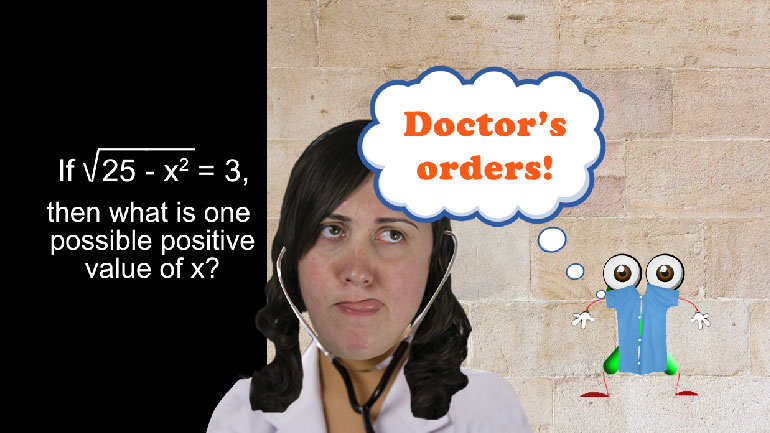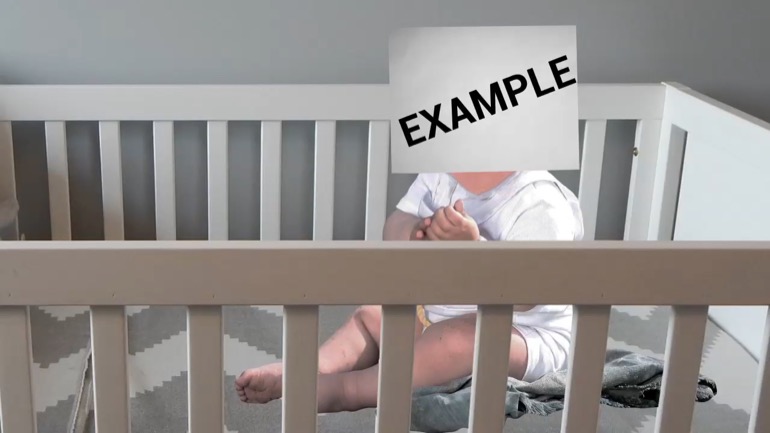ShmoopTube
Where Monty Python meets your 10th grade teacher.
Search Thousands of Shmoop Videos
SAT Math 4.1 Algebra and Functions 1203 Views
Share It!
Description:
SAT Math 4.1 Algebra and Functions
Transcript
- 00:02
And here's your mathy shmoop du jour...
- 00:05
Where do the graphs of y = -1/2 x squared + 4
- 00:09
and x - 2y = -2 meet?
- 00:14
And here are the potential answers...
- 00:20
We actually want to know where the two graphs INTERSECT.
Full Transcript
- 00:22
In other words, we have to solve a system of equations.
- 00:26
For this problem, the easiest way to do that is by substitution because we already have
- 00:30
y equals something in one of the equations...
- 00:33
...and we can just plug in that value of y into the second equation.
- 00:37
We get x - 2 times the quantity -1/x squared + 4 = -2
- 00:44
We can distribute the -2 in the parentheses on the left side
- 00:48
to get x + x squared - 8 = -2.
- 00:52
Then we add 2 to both sides...to get x squared + x - 6 = 0.
- 00:59
Our equation factors into x + 3 times x - 2.
- 01:03
To make the left side equal zero, one of the factors has to be zero, so x equals either
- 01:09
2 or -3. Let's plug these two solutions into one
- 01:12
of our original equations to find y.
- 01:15
We'll go with the first one, since it's already solved for y.
- 01:18
When x equals 2, y equals -1/2 times 2 squared + four.
- 01:23
We can multiply the 2 squared by -1/2, and add 4 to get y = 2.
- 01:28
Next, we can plug in -3 for x, which gives us y = -1/2.
- 01:34
Our two solutions are (2, 2) and (-3, -1/2).
- 01:39
Looks like our answer is B.
Up Next
SAT Math 2.1 Geometry and Measurement. What is the measure of angle z in terms of x and y?
Related Videos
In 2014, the unemployment rate of one county in California was 7%. In another county, the unemployment rate was 11%. Which of the following express...
Angela is making cookies for a bake sale. She expects each batch of her cookies to sell for $40. It costs her $10 to make one batch of cookies, and...




